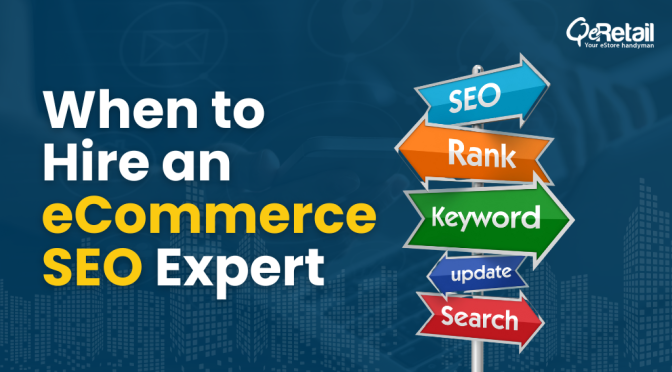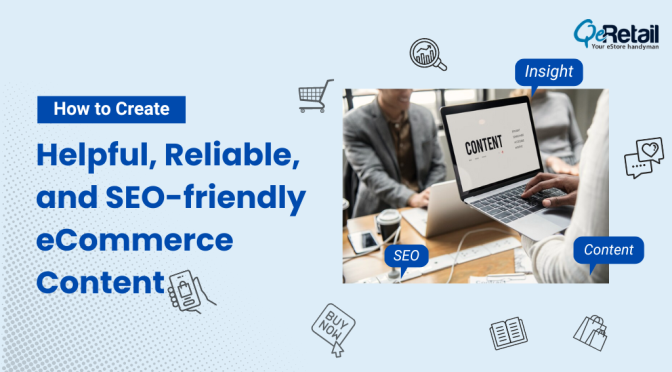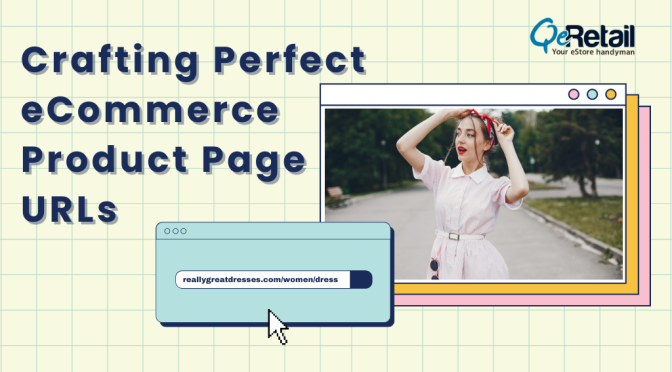Search Engine Optimization (SEO) is an ever-evolving affair to retaliate the fierce eCommerce competition. Truth be said; almost 80% of the search engine market share is consumed by Google Search, and this is the reason why almost all the SEO practices evolve around ranking ahead in Google. With this being said, it is inevitable to keep an eye on Google algorithm updates. During the past few years, these updates are changing the way search queries appear on Google Search, and it is needed more than ever to be on the same page as Google’s best practices to survive and shine! SEO helps websites in inculcating changes which are in accordance with the Google standards, and on-page SEO is an unmissable branch of the tree named SEO.
eCommerce Stores, unlike regular websites, have a number of webpages for optimization and ranking. On-page SEO is a factor you should start taking into consideration the moment you determine to go online. Whilst doing On-Page activities it’s also important to have balanced with Off-page optimization e.g. you can use rank tracking tools like Linkio which will help you with building rankings and getting quality traffic to your website.
Now more than ever, eComm Stores are recognizing the impact that a well-built website leaves on the users and one of the most essential factors to rank ahead in searches is by bettering the on-page SEO. Here’s a DIY on-page SEO guide for eCommerce stores at your disposal to start with the implementation right away!
Table of Contents
On-page SEO Factors
A well-maintained on-page eCommerce SEO doesn’t only affect your ranking on search engines, but it also influences your overall online brand presence and user experience! Not to mention, the entire process is about how you come across as an online business entity in the user’s eyes.
The two on-page SEO factors are,
1. How the users see your website
The user perspective matters here because they’re the ultimate users of whatever you’re offering. The on-page SEO for eCommerce has several end-user factors in terms of how the website is visible to them.
User Interface – Is the website has quick page load speed? Is the mobile display has swift navigation and readability features? Is it easy to navigate through all the categories and webpages?
Content – Do you provide searchable content on your website? Is it informative enough for them to derive a conclusion whether they wanna make a purchase decision or not?
Value – Do your headline and description match to the context of the entire topic?
2. How the crawlers/bots see your website
The search engine bots seek for relevance and a performed on-page SEO for eCommerce gives exactly what they need! This is how they estimate your domain authority and page rank.
Mobile-friendliness – Is your eComm site optimized for mobile users? Is the website design responsive enough?
Bot friendliness – Is your website data optimized (site map) for the search engine bots? Can they easily crawl and scroll the page content? Do your context match with the content available?
Website Metadata – Are your page title, meta description, and URL in sync? Do you have the optimized HTML clues in accordance with the purpose of your content? Are the media available make sense with the content?
With keeping the above-mentioned on-page SEO eCommerce factors in mind, the entire process comprises for several coding, content, and external elements which can be easily altered to gain fruitful outcomes by the store owners themselves. Let’s start with the most essential one of them all,
Keyword Research
Any eCommerce website has a focussed category which can be considered as their key product. Every other product and services revolve around this key offering which is ultimately your ‘Head Keyword’. Carrying out detailed keyword research before putting anything on the website is the first part of any on-page SEO process. It is recommended to carry out page-wise keyword mapping and prioritization to come up with a relevant set of target keywords for each page, category, product, and service. This might sound tedious at first but the results are worth the efforts.
By doing so, you can avoid the keyword cannibalization and gain higher chances for your every page to rank in the search engines. Using variations of the head keywords, using long tail keywords, the use of LSI keywords and other important aspects should be covered when you perform the deep keyword research for your eComm store. That is not it, the in-depth research also provides a mapping that can be utilized in the body content for better relevance and ranking.
Header Tags and URL
Enough has already been said about the importance of proper implementation of the header tags. The keyword research plays a vital role here as well. You should always use the head keyword in every tag possible to increase your chances of ranking ahead. HTML coding has a significant role when you’re working towards On-page SEO for eCommerce. Putting appropriate Title Tag, H1, H2 Tags, Description Tag, and Image ALT Tags, using the key keyword will optimize your webpage for better. This practice should be applicable to all the pages available on your website including the product pages.
Another considerable ranking factor is the page URL. Studies show that short, to the point and crisp URL has higher chances of ranking ahead in the SERPs. As in one of the interviews, a Google spokesperson mentioned that Google will give optimal weightage up till the five words in any URL, and won’t take others into much consideration. So, a keyword-rich URL will do the trick here!
Page Content
Google has always supported the long-form content and has a tendency to rank pages with 1000+ words ahead in SERPs. This might sound unreasonable as we are talking about the eCommerce stores, isn’t it? We understand your concern about blogs and articles having these many words and not a product page. But, yes! You’ve read that right. Try putting product description in a way which can fill this word requirement. Add various tabs describing the product like its manufacturing details, its usage, its benefits, brand info, reviews, overviews and more. In fact, adding a FAQ section has the potential to increase the conversions as the user will be able to make a purchase decision easier.
The body copy is considered optimized when the head keyword of that particular page is relevantly spread into the content for 3-5x times. By doing so, you’ll give the search engines a proper intent about the page.
Interlinking Pages
Another essential on-page SEO factor for eCommerce sites is to provide internal liking to the other, primary webpages of your site. The process of interlinking pages will help the search engine crawlers to visit those important pages of your eComm stores and pass juices to those key pages. This is also a key ranking factor which can be achieved by smartly handled on-page SEO for e-commerce stores!
Final Words
On-page SEO for eCommerce is an inevitable factor for all the online stores in general. In a nutshell, it is better to better the backend work for great front-end results, and on-page SEO is all about that. Factors like adding pagination, adding canonical codes, adding social media sharing buttons, schema markups, mobile optimization, and many others require strong developer support, but the mentioned above are the points which you can optimize on your own to gain better outcomes.







